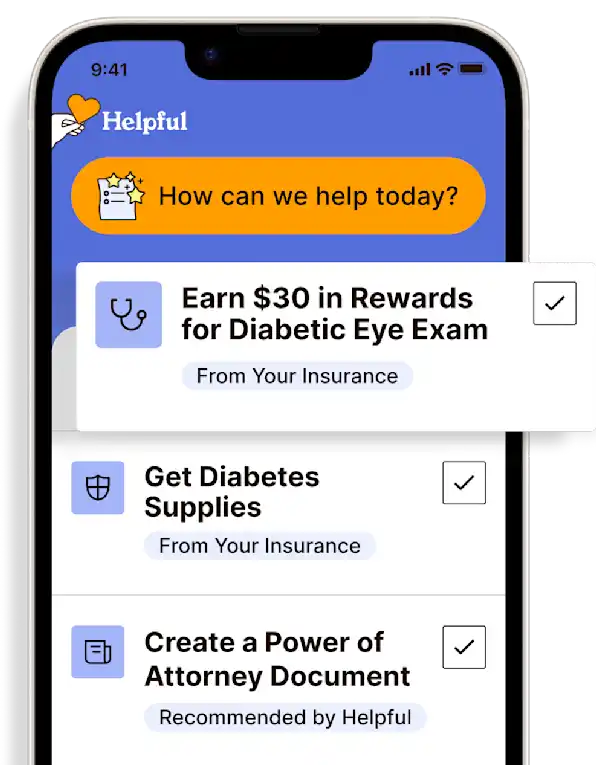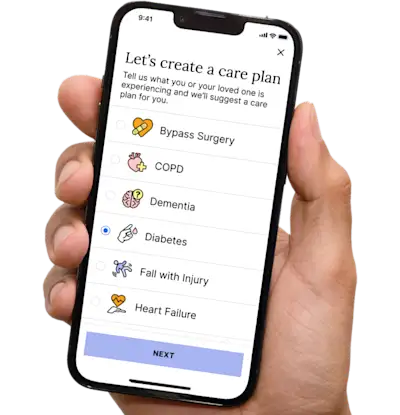Stages of COPD
COPD is not curable but it is manageable. Knowing the stages of COPD and how it will progress helps you anticipate needs, treatment, and interventions.
Get insurance benefits, legal documents, and medical records in one place

Helpful Highlights
Heart Failure Stage 1: Mild
Stage 2: Moderate
Stage 3: Severe
Stage 4: Very Severe
As your loved one's COPD evolves and progresses, here is how you can best advocate for them and their treatment.
Be vigilant and keep their primary care provider and pulmonologist informed, especially if there are changes in their condition, such as greater difficulty breathing or worsening of other symptoms, especially if it appears to be an exacerbation.
Ask the primary care provider or pulmonologist about treatment options. Therapies may combine different types of medications, as well as incorporate breathing and physical activities, that can help manage moderate to severe COPD symptoms and may even reduce or prevent COPD exacerbations.
Stay positive and encourage your loved one to stay on their treatment plan. Tips on how to stick with the treatment plan:
Make it a habit
Synchronize and schedule activities, meals, medications, and daily routines
Be prepared if symptoms flare by creating a plan of action with the primary care provider or pulmonologist. For cases of sudden and severe symptoms, such as with an exacerbation, make sure to have the emergency plan instructions from the primary care provider or pulmonologist, the name and number of an emergency contact person who can serve as a backup for assistance, a current list of medications, and all healthcare insurance information (the cards themselves or copies of the front and back).
Stages of COPD

Stage 1: Mild. Symptoms are subtle and often unnoticed with some shortness of breath and nagging dry cough.

Stage 2: Moderate. Symptoms worsen with more frequent or severe shortness of breath, and persistent cough with phlegm/mucus (that may change color), exacerbations may happen but are infrequent and mostly manageable at home.

Stage 3: Severe. Symptoms are severe, especially shortness of breath in the morning, exacerbations are more frequent and intense, requiring medical attention; swelling of feet, ankles, or legs may begin, and there may be occasional wheezing.

Stage 4: Very Severe. Symptoms are very severe where breathing takes great effort, the heartbeat may be fast and/or irregular, crackling breath sounds might be heard or no breath sounds at all in some lung fields, weight loss occurs*, pulmonary hypertension is possible, and there may be episodes of delirium. Exacerbations require hospitalization.
*Weight loss occurs because of a lack of intake of calories and calories being burned. Eating becomes more difficult with Stage 4 COPD because it increases shortness of breath, as breathing stops with swallowing, so people eat less or not at all. Hence, a lack of intake calories. On the flip side, people with COPD may burn 750 calories a day on breathing effort alone (compared to just 50 calories a day for someone without COPD).
RESOURCES
COPD.com – Understanding COPD Stages & Progression
Global Allergy & Airways Patient Platform (GAAPP) – Four Stages of COPD
No content in this app, regardless of date, should ever be used as a substitute for direct medical advice from your doctor or other qualified clinician.
Get more support and guidance on insurance benefits, medical records and legal forms.
Helpful brings together your insurance benefits, legal documents, and medical records in one personalized place — so you always know what you have, and never have to search again.

Technology for Health Tasks. Mental Health for the Tough Stuff.
Helpful connects your medical records, insurance, and caregiving tasks automatically. And when you need more than logistics, a therapist is here to guide you.
In-Network and Covered
For Individuals, Couples and Families
HIPAA Compliant, Data Stays Private


Healthcare Tasks Simplified

From syncing records to spotting drug interactions, Helpful does the heavy lifting, turning complex health info into clear tasks and showing you benefits you can actually use, giving you clarity and control over your care.

In-Network Mental Health

Our licensed therapists are here to support you and your loved ones through stress, burnout, and life’s hardest moments, with an inclusive, compassionate approach that works with most insurance plans.

Create Legal Documents

Plan ahead by creating will, trusts, advance directives and more, that ensure your wishes are honored in the event you can’t speak for yourself -with Helpful guiding you every step of the way.